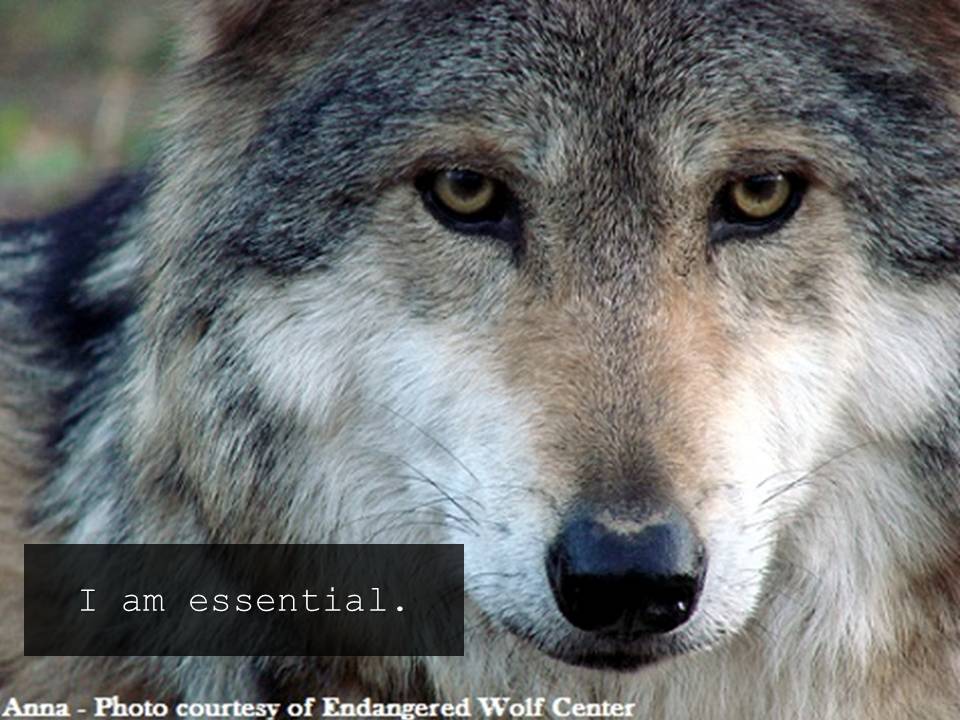30
Aug
In the News: Thousands weigh in on wolf recovery plan

Just hours before the Tuesday night deadline approached for the public to weigh in on a proposed federal management plan for the endangered Mexican gray wolf, more than 9,000 comments had been posted online. Thousands more had been submitted to U.S. Fish and Wildlife Service by mail — most opposing a wolf recovery plan that many criticized as too restrictive to allow the species to thrive.
Last week, the New Mexico State Game Commission voted to support the proposal, one that conservationists have argued will cede too much control to the states of New Mexico and Arizona. Both states have sought to limit the recovery program, and New Mexico officials have taken legal action in recent years seeking to block wolf releases.
The Fish and Wildlife Service is under a court order to have a completed wolf management plan by the end of November.
The plan is a long time coming, as the original guidance for how to restore the species was adopted in 1982. The lack of a plan has spurred numerous legal challenges as well as skirmishes over states’ rights under the federal Endangered Species Act. But environmentalists say the current proposal doesn’t go far enough to boost the population or address concerns about genetic diversity.
Many comments submitted online, echoing comments made by dozens of wolf supporters at a July hearing in Albuquerque, urged the Fish and Wildlife Service not to give the states too much control over the program and pleaded with the agency to lift a cap on the number of wolves that can roam the wild and to expand the animal’s range land.
If the population exceeds 380 wolves, the plan says, wolves can be moved to Mexico or removed from the wild in the U.S. by other means. Following the most recent count of Mexican wolves, in 2016, the species’ population in the two states was believed to be 113.
More than 60 business leaders in northern Arizona and southern Utah, including owners, managers and independent contractors from the tourism and service industries, submitted a joint request to Fish and Wildlife, asking the federal government to release Mexican gray wolves in the Grand Canyon area.
Currently, the draft plan limits the wolf recovery efforts to just one zone south of Interstate 40 in Arizona and New Mexico.
Business leaders in the Grand Canyon area said the wolf recovery efforts would have economic and environmental benefits for their communities.
Defenders of Wildlife, an international wildlife advocacy organization, said in an email Tuesday that its members had submitted nearly 22,000 comments in defense of the wolves. Many of those comments also requested that the federal agency allow the wolves to roam north of I-40.
“We know that wolf recovery can bring our landscapes and rivers back to life — just like wolf reintroduction did in Yellowstone National Park in the mid-1990s,” the statement said, “and wolf recovery can contribute to our regional economy.”
This article was published in the Santa Fe New Mexican.
~~~~~~~~~~~~~~~~~~~~~~~~
The comment period is over, but you can read the comments that were submitted to the U.S. Fish and Wildlife Service HERE.
Links to the Draft Recovery Plan and supporting documentation are provided below.
Additional Documentation Referenced in Draft Plan:
Draft Biological Report for the Mexican Wolf, May 1, 2017 version
Mexican Wolf Habitat Suitability Analysis in Historical Range in Southwestern US and Mexico, April 2017 version
5 peer reviews received on the above documents (Peer reviews are anonymous at this time but FWS will provide peer reviewers names and affiliations when the recovery plan and biological report have been finalized.)
READ MORE: New Lobo ‘Recovery’ Plan Puts Politics Before Science Risks Recovery of Highly Endangered Mexican Gray Wolves



